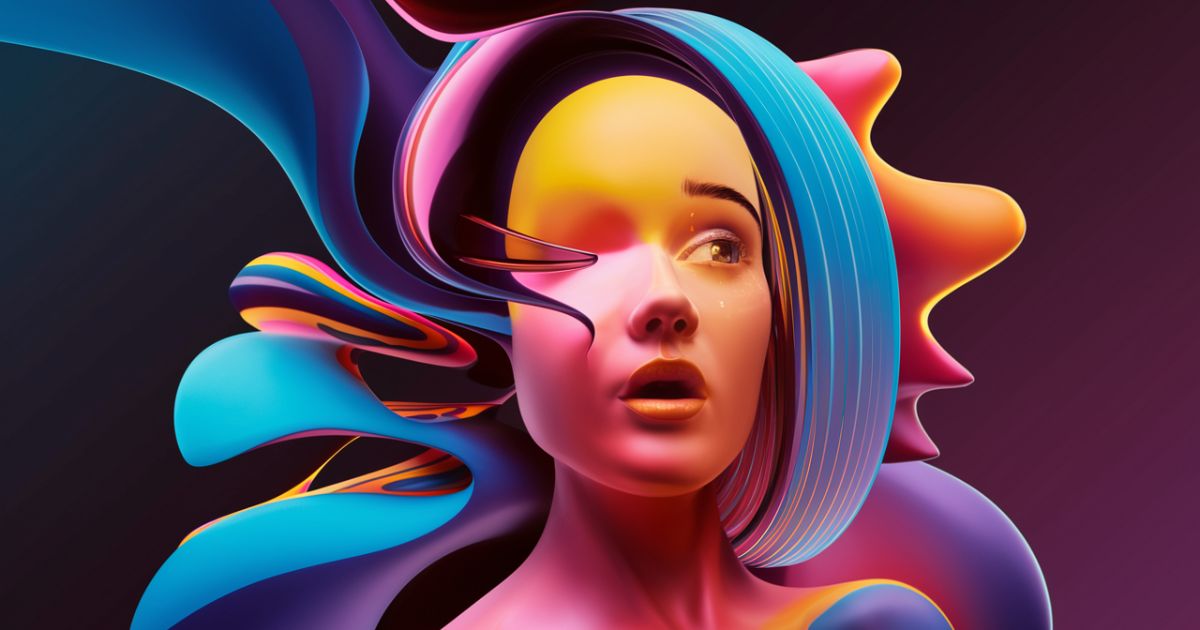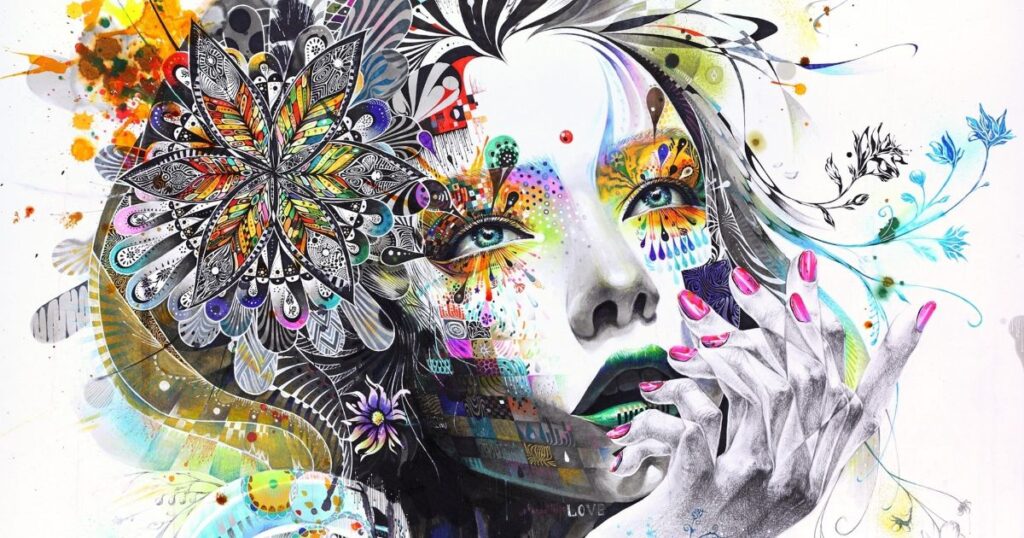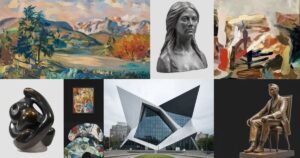In the ever-evolving landscape of artistic expression, digital art has emerged as a powerful and mesmerizing medium. At the forefront of this digital revolution stands AnkinsArt, a beacon of creativity in the modern art world.
Let’s dive into the pixelated paradise of digital art and discover how artists like John Ankins are reshaping our visual experiences through innovative approaches and cutting-edge technologies.
What is Digital Art?
Digital art is a form of artistic expression that harnesses the power of technology to create stunning visual masterpieces. It’s not just about using a computer to draw; it’s a whole new way of thinking about art. Imagine a canvas that’s not limited by physical constraints, where colors can shift and change, and where the impossible becomes possible. That’s the essence of digital art.
From digital painting to 3D modeling, the spectrum of digital art is vast and varied. Artists use specialized software and hardware to bring their visions to life, often blending traditional artistic practices with cutting-edge digital techniques. The result? A vibrant tapestry of creativity that pushes the boundaries of what we consider art.
The Evolution of Digital Art
The journey of digital art is a fascinating tale of technological advancements and artistic innovation. It all began in the 1960s when pioneers started experimenting with computer graphics. Back then, creating art on a computer was a complex and time-consuming process, limited by the technology of the time.
Fast forward to today, and the digital realm has exploded with possibilities. The evolution of software, hardware, and even AI has transformed digital art into a mainstream form of artistic expression. Artists now have tools at their fingertips that their predecessors could only dream of, allowing for unprecedented levels of detail, complexity, and interactivity in their work.
AnkinsArt: A Brief Overview
In the vast ocean of digital artists, John Ankins, the creative force behind AnkinsArt, stands out as a true innovator. Ankins’ journey into the digital art world is a testament to the power of passion and perseverance. Starting as a traditional artist, he embraced the digital medium with open arms, seeing it not as a replacement for traditional art but as an extension of his creative toolkit.
Ankins’ work has garnered attention for its unique blend of surrealism and hyper-realism, all achieved through digital means. His pieces have been featured in online galleries, digital art exhibitions, and even on massive digital billboards in major cities, bringing his fantastical creations to life on an epic scale.
The Unique Style of AnkinsArt
What sets AnkinsArt apart in the crowded digital art space? It’s all in the details. Ankins has developed a signature style that combines intricate linework with bold, vibrant colors. His digital paintings often feature impossible landscapes where physics takes a backseat to imagination.
One of Ankins’ most recognizable techniques is his use of fractals – complex geometric patterns that repeat at every scale. He incorporates these mathematical marvels into his work, creating pieces that viewers can get lost in for hours, discovering new details with every look.
Inspiration Behind AnkinsArt’s Creations
For Ankins, inspiration comes from everywhere. Nature plays a big role, with many of his pieces featuring organic forms twisted into fantastical shapes. But he’s equally influenced by urban environments, blending cityscapes with natural elements to create surreal digital worlds.
Ankins also draws heavily from science fiction and mythology. In one of his most famous series, “Myths of the Digital Age,” he reimagines ancient gods and heroes as beings of pure energy and data, exploring how our modern, technology-driven world might interpret these timeless stories.
Techniques Used by AnkinsArt
Ankins’ toolkit is as diverse as his art. He’s a master of digital painting, using software like Adobe Photoshop and Corel Painter to create richly detailed 2D works. But he doesn’t stop there. Ankins also delves into 3D modeling and animation, using programs like Blender and Cinema 4D to bring his creations to life.
One of Ankins’ most innovative techniques involves combining traditional media with digital tools. He often starts a piece by sketching on paper, then scans it and transforms it in the digital realm. This blend of old and new gives his work a unique texture and depth that’s hard to achieve with purely digital methods.
Impact of AnkinsArt in the Digital Art Community

AnkinsArt hasn’t just made waves; it’s created a tsunami in the digital art community. Emerging artists look to Ankins for inspiration, studying his techniques and trying to emulate his unique style. But more than that, Ankins has become a vocal advocate for digital art as a legitimate form of artistic expression.
Through online tutorials, live streaming sessions, and virtual workshops, Ankins has helped countless aspiring digital artists hone their skills. He’s a firm believer in the power of community and often collaborates with other artists on massive digital projects that push the boundaries of what’s possible in the digital realm.
Digital Art Platforms
The rise of digital art has been fueled in part by the proliferation of online platforms dedicated to showcasing and selling digital creations. Sites like DeviantArt, ArtStation, and Behance have become virtual galleries where artists can display their work to a global audience.
Social media has also played a crucial role in the digital art revolution. Platforms like Instagram and Twitter allow artists to share their work directly with fans, bypassing traditional gatekeepers and building their own followings. Ankins himself has a massive social media presence, using these platforms not just to showcase his finished pieces but to give followers a behind-the-scenes look at his creative process.
Read More: Luminous Scans: Your Ultimate Source for High-Quality Manga
The Future of Digital Art
As we look to the horizon, the future of digital art seems brighter than ever. Emerging technologies like virtual reality (VR) and augmented reality (AR) are opening up new frontiers for artistic expression. Imagine stepping into a painting, walking around it, and interacting with it. That’s the kind of immersive experience that VR art is starting to make possible.
Ankins is at the forefront of this new wave, experimenting with VR tools to create 3D sculptures that exist only in virtual space. He’s also exploring the possibilities of AR, creating pieces that blend seamlessly with the real world when viewed through a smartphone or tablet.
Why Digital Art Matters
In a world that’s increasingly digital, art needs to evolve to stay relevant. Digital art matters because it speaks the language of our time. It’s accessible, allowing anyone with a computer and some creativity to express themselves. It’s versatile, capable of being displayed on anything from a smartphone screen to a giant billboard.
Digital art is pushing the boundaries of what we consider art. It’s challenging our perceptions, forcing us to reconsider our definitions of creativity and artistic skill. As Ankins often says, “Digital art isn’t about replacing traditional art; it’s about expanding the possibilities of artistic expression.”
Challenges in Digital Art
Despite its many advantages, digital art faces its share of challenges. Copyright issues are a major concern, with the ease of sharing and reproducing digital works making it difficult for artists to protect their creations. Ankins has been a vocal advocate for better copyright protection for digital artists, working with online platforms to develop more robust systems for tracking and attributing digital art.
Another challenge is the perception that digital art is somehow “less real” or requires less skill than traditional art. Ankins and other digital artists are constantly working to educate the public about the creativity, skill, and hard work that goes into creating digital masterpieces.
How to Get Started with Digital Art
For those inspired by Ankins’ work and eager to dive into the world of digital art, getting started is easier than ever. Here are some tips:
- Choose your software: Start with user-friendly programs like Procreate (for iPad) or Krita (for desktop). As you grow more comfortable, you can explore more advanced software like Adobe Photoshop or Corel Painter.
- Invest in a good drawing tablet: A pressure-sensitive tablet can make a world of difference in your digital art. Wacom tablets are industry standard, but there are many affordable options for beginners.
- Learn the basics: Start with fundamental techniques like layering, blending, and using different brush types. There are countless free tutorials online to help you get started.
- Practice, practice, practice: Like any skill, digital art takes time to master. Set aside time each day to experiment and create.
- Join online communities: Platforms like DeviantArt and ArtStation have active communities where you can share your work, get feedback, and learn from other artists.
Supporting Digital Artists
As consumers and art lovers, we play a crucial role in supporting digital artists and helping this art form thrive. Here are some ways you can support digital artists like Ankins:
- Buy their art: Many digital artists sell prints, merchandise, or digital downloads of their work.
- Commission pieces: If you love an artist’s style, consider commissioning a custom piece.
- Share their work: Spreading the word about artists you love on social media can help them reach a wider audience.
- Attend digital art exhibitions: Many galleries and museums now feature digital art. Attending these shows demonstrates the public’s interest in this medium.
Conclusion
The world of digital art is a vibrant, ever-evolving landscape where creativity knows no bounds. Artists like John Ankins and his AnkinsArt creations are at the forefront of this digital revolution, pushing the boundaries of what’s possible and inspiring a new generation of digital creators.
As we look to the future, it’s clear that digital art will play an increasingly important role in our cultural landscape. Whether it’s through stunning digital paintings, mind-bending 3D models, or immersive virtual reality experiences, digital art is reshaping how we create, consume, and think about art.



